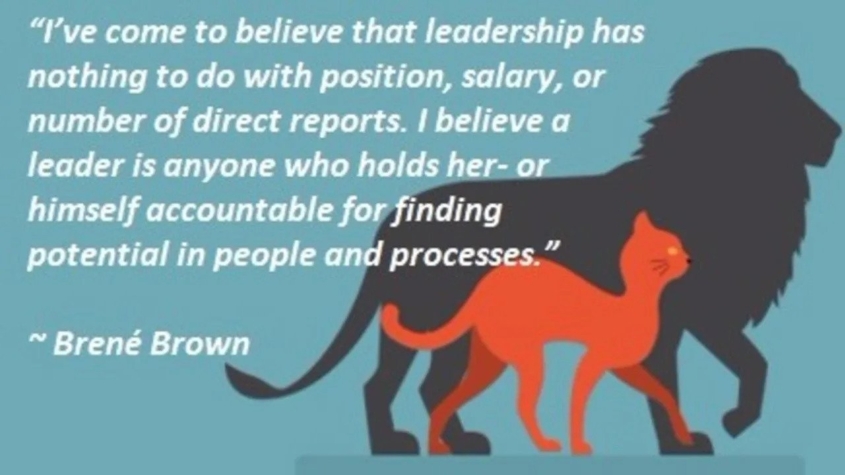/
As she describes in her TED Talk from 2015, when Nadine Burke Harris stumbled into the world of Adverse Childhood Experiences (ACEs), it made her rethink her entire approach to practicing medicine. After finishing her residency, she went to work for California Pacific Medical Center and together they opened a clinic in Bayview-Hunter’s Point in San Francisco. As she began her work there, she focused on improving many of the traditional health disparity measures for underserved communities. But even though she was hitting her numbers, she noticed that many kids were being referred to her for symptoms of Attention Deficit Hyperactivity Disorder (ADHD). For many of these kids, she did not feel like she could make a diagnosis of ADHD based on their histories. She felt like she was missing something. The dots connected for her when a colleague shared with her the findings from the original ACE study from the Centers for Disease Control and Kaiser Permanente that showed strong epidemiological evidence for the link between childhood adversity and health outcomes and behaviors.
For Burke Harris, that Aha! moment led to action that fundamentally changed the way she practices and has since launched the Center for Youth Wellness (CYW). In partnership with the Bayview Child Health Center, the CYW screens every child they see for ACEs and is also part of a national movement to transform how pediatric medicine responds to kids exposed to ACEs and toxic stress. According to a CDC study released in 2012, the total lifetime costs in the United States associated with one year of confirmed cases of childhood maltreatment (physical abuse, sexual abuse, psychological abuse and neglect) is estimated at $124 billion. Going back to Burke Harris’ earlier observations about ADHD, recent studies have suggested that many cases of ADHD may actually be misdiagnosed childhood trauma. While the exact number is unclear, a 2010 study suggested the number of children in the U.S. misdiagnosed with ADHD could be as high as 1 million.
In a recent presentation, Burke Harris describes a 2 year, 9 month female patient of hers who came in for a well child visit. While at the 25th percentile at birth, this child was currently below the 3rd percentile for height, weight, and BMI. After a detailed medical exam and history, the thing that stood to Burke Harris was the child’s ACE score of 7. This score led Burke Harris to conclude that her failure to thrive diagnosis was likely caused by toxic stress physiology. As a result, she came up with a multidisciplinary intervention plan that included sleep, exercise, mindfulness, nutritional supplements, a referral to Special Supplemental Nutrition Program for Women, Infants, and Children (WIC), and a referral to CYW’s Child Parent Psychotherapy. Since that time, the child’s BMI has increased from below 3% to between 10-25%.
The story of Burke Harris and the CYW is very familiar to those in the trauma-informed movement. It is indeed a great example of how the principles of resilience can be put into action in a specific setting and transform the very foundation of how that organization operates and the outcomes it achieves. There are many other examples from other sectors. These examples, despite being grounded in the same principles, sometimes look quite different depending on the specific setting.
To highlight a few:
At Martin Luther King, Jr. High School (King High), a continuation high school in Davis, CA, Principal Michelle Flowers was inspired after seeing watching Paper Tigers, a documentary about Lincoln High School in Walla Walla, WA, the first high school in the country to implement trauma-informed and resilience-building practices. She wanted to bring those practices to her own community of students. Flowers’ interventions focus on three main goals: 1) increase access to mental health services 2) create a wellness center for students 3) train all staff in trauma-informed practices. Since she began this journey in August 2016, she received a grant and has implemented a number of programs and services with those funds, including the following:
- Additional time available for students with both the school counselor and psychologist,
opening of an on-campus wellness center, in partnership with CommuniCare, that is staffed by a nurse practitioner - The center is open to students one day a week for four hours and students can access both general and reproductive health services
- Training for all staff on trauma-informed practices and some staff on restorative practices
- Implementation of other wellness programs such as a self-care group for students
- Mindful Mondays, yoga on Thursdays, and additional Brain Breaks throughout the day
- Other programs to focus on more basic needs such as nutrition and clothing
She has also completed a voluntary ACE survey with her students, finding an average ACE score of 4. Since implementing these programs, suspensions are down and the school’s chronic truancy rate has been cut in half. For Flowers, her work boils down to one question: “How do we build resiliency in the students so they are successful when they leave King?”
Many educators are also starting to bring mindfulness practices into schools one classroom at a time. There is a strong body of evidence on the impact of mindfulness on a range of outcomes related to school performance, including increasing attention, supporting emotional regulation, and decreasing stress and anxiety. One counselor at an elementary school in the greater Boston area took a training through Mindful Schools and now integrates the mindfulness practices into her existing mandated curriculums. For example, she recently paired a mindful listening session with a curriculum focused on positive relationship skills. In her program, students get the opportunity to practice the mindfulness technique and lead a mindful practice if they choose. She emphasized the importance of educators having their own mindfulness practice, both in terms of reducing their own stress and burnout and also in terms of supporting the students’ practice in an authentic way.
For Taylar Neuvelle, her move to action inspired her to start Who Speaks for Me?, an organization dedicated to raising awareness about the intersection of trauma and women’s incarceration and the impact of mass incarceration, with the goal of ending the trauma-to-prison pipeline. Who Speaks for Me? offers a variety of programs, including “Sharing Our Stories to Reclaim our Lives,” a writing project offered in the Washington, DC jail for justice-involved women. The program provides women who are currently or formerly incarcerated a forum for tracing their history with trauma and the connection with incarceration through writing short stories about their lives. As one woman in the program writes, “When we are stressed, sad, or just very emotional, we have these journals to turn to.”
In the Bay Area, CA, “Barbershop Forums” were the vision of three men who wanted to improve relationships between law enforcement and the community. Community organizer Jack Bryson, whose two sons were with Oscar Grant when he was killed, connected with Bobby Hoofkin, a lieutenant in the Oakland Police Department and Mike Carroll, a lieutenant in the Alameda County Sheriff’s Department. They reached out Paul Chambers, a reporter at KTVU, to in fall of 2016 to moderate community discussions to see if they could find way to bridge gaps, improve tensions, and find solutions to improve the safety of communities. Since then, Chambers has held once-a-month meetings at community barbershops, targeting communities with high levels of violence throughout the Bay Area. More than 200 people showed up at a recent forum in East Oakland, where the Oakland city officials, the Police Chief, and the Alameda County District Attorney were available to discuss their policies and talk about emotionally charged topics such as racial profiling and officer-involved shootings. The forums have inspired some community members to pursue careers in law enforcement, with seven recruits currently in police academies throughout the Bay Area. Joe Conner, a full-time officer in the Emeryville Police Department was recently honored as the first Barbershop Forum inspired graduate from a police academy.
For Tracy Fauver, Executive Director at Yolo County CASA (Court Appointed Special Advocates), an organization that pairs foster youth with a trained and supervised community volunteer, she describes her watershed moment as when she presented the ACEs research to her board. Her board immediately understood the connection between the research and Yolo CASA’s mission and gave her full support to focus on becoming a trauma-informed organization. As Fauver started on this journey, one of the first things she did was to take an inventory of the resilience-building practices that Yolo CASA was already doing and talk about these practices more explicitly. For example, as an organization whose volunteers are at the core of its ability to deliver its services, the most important thing Yolo CASA does is support its volunteers. This practice was in place long before anyone there had ever heard of ACEs. But now, this is a much more explicit focus that flows throughout all levels of the organization’s policies and practices.
Fauver also looked closely at Yolo CASA’s physical environment and how it could be improved. She replaced the existing art with artwork created by children, found ways to add more natural light to the office, and even brings her dog J.J. into the office every day (along with dog treats for staff, volunteers, and children to give to her!). She has also added mindfulness practices into the organization, starting meetings with mindful moments. Next up is a focus on conflict resolution, with plans for training staff on the use of restorative practices. Since implementing the trauma-informed and resilience-building practices four years ago, Yolo CASA has seen a threefold increase in net proceeds from their annual fundraising event, which Fauver attributes directly to these efforts. While she does not have the data yet, she has also observed an increased retention rate for volunteers. Fauver emphasized the importance of not letting the lack of blueprint for building a trauma-informed organization keep people from getting started: “This is process that will never end.”
As we look across these examples, the common thread beyond the principles of resilience is a leader who was inspired to make a change. As pointed out by Brené Brown, leadership has more to do with the ability to build capacity than a particular title or number of staff. A leader can be a CEO or an executive director, but it certainly does not have to be.
As we talk to people about their training needs, the biggest question we get is something along the lines of “Ok, I get ACEs. But what can I do about it?” They have had their Aha! moment but don’t know how to get started. The Resilience Champion Certificate, launching in January 2018, is a 6-week online training program to help people get started in leading their organization or community on a journey towards resilience. It is designed to build the capacity of leaders who want to lead their organizations and communities on the path to resilience and move from Aha! to Action. In this course, we will provide a solid foundation on the key principles of resilience and trauma-informed practices and a forum to help translate those principles into practical application in their own unique settings. We hope you will join us…who knows, maybe you could be the next Nadine Burke Harris!
Click here to learn more and to register for the Resilience Champion Certificate…






 Getting Started: A Guide from Trauma to Resilience
Getting Started: A Guide from Trauma to Resilience
Leave a Reply
Want to join the discussion?Feel free to contribute!